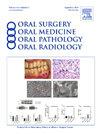使用智能手机拍摄的照片与使用数码单反相机拍摄的照片在质量上是否存在差异?
IF 2
3区 医学
Q2 DENTISTRY, ORAL SURGERY & MEDICINE
Oral Surgery Oral Medicine Oral Pathology Oral Radiology
Pub Date : 2024-06-21
DOI:10.1016/j.oooo.2024.06.009
引用次数: 0
摘要
本研究的目的是比较口腔颌面外科医生(OMS)通过 iPhone、三星和数码单反相机(DSLR)这三种不同相机拍摄的照片的质量。这是一项匿名在线调查研究。研究对象包括新泽西州、纽约州、宾夕法尼亚州和马萨诸塞州的口腔颌面外科医生,他们都是本州协会的会员。主要结果变量是对使用 3 种不同相机拍摄的口外和口内照片质量的评分。预测变量是拍摄照片时使用的相机类型:iPhone、三星和数码单反相机。计算了描述性统计。斯皮尔曼检验用于分析结果变量之间的相关性。大多数受访者来自全职私人诊所(n = 84,77.06%),其次是全职学术界(n = 12,11.01%)。斯皮尔曼检验显示,口外照片和口内照片在最佳质量评分上的相关性微乎其微(0.15,= 0.13)。在次佳(0.15,=0.11)和最差质量评级(0.09,=0.32)中,口外照片和口内照片之间的相关性可忽略不计。研究结果表明,使用智能手机拍摄的照片与使用数码单反相机拍摄的照片在质量上没有差别。未来关于智能手机理想应用的讨论将允许医疗服务提供者之间通过安全的信息传输系统同意和传输高质量的照片,以解决保密方面的道德问题。(口腔外科口腔医学口腔病理学口腔放射年;VOL:page range)。本文章由计算机程序翻译,如有差异,请以英文原文为准。
Is there a difference in quality of photographs obtained using smartphones, compared to the photographs obtained via digital single-lens reflex camera?
Objective
The purpose of this study was to compare the quality of photographs obtained with 3 different cameras: iPhone, Samsung, and digital single-lens reflex (DSLR), as assessed by oral and maxillofacial surgeons (OMS).
Methods
This was an anonymous online survey study. The study population consisted of OMS in New Jersey, New York, Pennsylvania, and Massachusetts who were members of their state societies. The primary outcome variable was ratings on the quality of extraoral and intraoral photographs obtained with 3 different cameras. The predictor variable was the type of camera used to obtain the photographs: iPhone, Samsung, and DSLR camera. Descriptive statistics were computed. Spearman test was utilized to analyze correlation between the outcome variables.
Results
The majority of respondents were from full time private practice (n = 84, 77.06%), followed by full time academia (n = 12, 11.01%). The Spearman test revealed negligible correlation between extraoral and intraoral photographs on the best quality rating (0.15, P = .13). Negligible correlation between extraoral and intraoral photographs were noted on the second best (0.15, P = .11), and least quality rating (0.09, P = .32).
Conclusion
Study results revealed that there is no difference between the quality of photographs obtained using smartphones, compared with the photographs obtained via a DSLR camera. Future discussions on an ideal application on smartphones would allow for consent and transfer of high-quality photographs via a secure messaging system between health care providers to address ethical concerns of confidentiality. (Oral Surg Oral Med Oral Pathol Oral Radiol YEAR;VOL:page range)
求助全文
通过发布文献求助,成功后即可免费获取论文全文。
去求助
来源期刊

Oral Surgery Oral Medicine Oral Pathology Oral Radiology
DENTISTRY, ORAL SURGERY & MEDICINE-
CiteScore
3.80
自引率
6.90%
发文量
1217
审稿时长
2-4 weeks
期刊介绍:
Oral Surgery, Oral Medicine, Oral Pathology and Oral Radiology is required reading for anyone in the fields of oral surgery, oral medicine, oral pathology, oral radiology or advanced general practice dentistry. It is the only major dental journal that provides a practical and complete overview of the medical and surgical techniques of dental practice in four areas. Topics covered include such current issues as dental implants, treatment of HIV-infected patients, and evaluation and treatment of TMJ disorders. The official publication for nine societies, the Journal is recommended for initial purchase in the Brandon Hill study, Selected List of Books and Journals for the Small Medical Library.
 求助内容:
求助内容: 应助结果提醒方式:
应助结果提醒方式:


